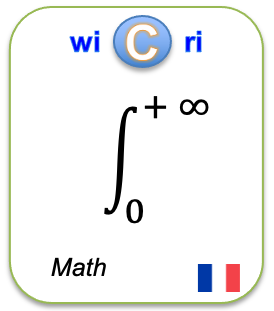The quantum McKay correspondence for polyhedral singularities
Identifieur interne : 000504 ( Main/Exploration ); précédent : 000503; suivant : 000505The quantum McKay correspondence for polyhedral singularities
Auteurs : Jim Bryan [Canada] ; Amin Gholampour [États-Unis]Source :
- Inventiones mathematicae [ 0020-9910 ] ; 2009-12-01.
Abstract
Abstract: Let G be a polyhedral group, namely a finite subgroup of SO(3). Nakamura’s G-Hilbert scheme provides a preferred Calabi-Yau resolution Y of the polyhedral singularity ℂ3/G. The classical McKay correspondence describes the classical geometry of Y in terms of the representation theory of G. In this paper we describe the quantum geometry of Y in terms of R, an ADE root system associated to G. Namely, we give an explicit formula for the Gromov-Witten partition function of Y as a product over the positive roots of R. In terms of counts of BPS states (Gopakumar-Vafa invariants), our result can be stated as a correspondence: each positive root of R corresponds to one half of a genus zero BPS state. As an application, we use the Crepant Resolution Conjecture to provide a full prediction for the orbifold Gromov-Witten invariants of [ℂ3/G].
Url:
DOI: 10.1007/s00222-009-0212-8
Affiliations:
Links toward previous steps (curation, corpus...)
- to stream Istex, to step Corpus: 002D89
- to stream Istex, to step Curation: 002D89
- to stream Istex, to step Checkpoint: 000459
- to stream Main, to step Merge: 000508
- to stream Main, to step Curation: 000504
Le document en format XML
<record><TEI wicri:istexFullTextTei="biblStruct"><teiHeader><fileDesc><titleStmt><title xml:lang="en">The quantum McKay correspondence for polyhedral singularities</title><author><name sortKey="Bryan, Jim" sort="Bryan, Jim" uniqKey="Bryan J" first="Jim" last="Bryan">Jim Bryan</name></author><author><name sortKey="Gholampour, Amin" sort="Gholampour, Amin" uniqKey="Gholampour A" first="Amin" last="Gholampour">Amin Gholampour</name></author></titleStmt><publicationStmt><idno type="wicri:source">ISTEX</idno><idno type="RBID">ISTEX:DF94CFD85B897C2918053C9E7CE8A6A249AB741B</idno><date when="2009" year="2009">2009</date><idno type="doi">10.1007/s00222-009-0212-8</idno><idno type="url">https://api.istex.fr/document/DF94CFD85B897C2918053C9E7CE8A6A249AB741B/fulltext/pdf</idno><idno type="wicri:Area/Istex/Corpus">002D89</idno><idno type="wicri:explorRef" wicri:stream="Istex" wicri:step="Corpus" wicri:corpus="ISTEX">002D89</idno><idno type="wicri:Area/Istex/Curation">002D89</idno><idno type="wicri:Area/Istex/Checkpoint">000459</idno><idno type="wicri:explorRef" wicri:stream="Istex" wicri:step="Checkpoint">000459</idno><idno type="wicri:doubleKey">0020-9910:2009:Bryan J:the:quantum:mckay</idno><idno type="wicri:Area/Main/Merge">000508</idno><idno type="wicri:Area/Main/Curation">000504</idno><idno type="wicri:Area/Main/Exploration">000504</idno></publicationStmt><sourceDesc><biblStruct><analytic><title level="a" type="main" xml:lang="en">The quantum McKay correspondence for polyhedral singularities</title><author><name sortKey="Bryan, Jim" sort="Bryan, Jim" uniqKey="Bryan J" first="Jim" last="Bryan">Jim Bryan</name><affiliation wicri:level="1"><country xml:lang="fr">Canada</country><wicri:regionArea>Department of Mathematics, University of British Columbia, V6T 1Z2, Vancouver, BC</wicri:regionArea><wicri:noRegion>BC</wicri:noRegion></affiliation><affiliation wicri:level="1"><country wicri:rule="url">Canada</country></affiliation></author><author><name sortKey="Gholampour, Amin" sort="Gholampour, Amin" uniqKey="Gholampour A" first="Amin" last="Gholampour">Amin Gholampour</name><affiliation wicri:level="2"><country xml:lang="fr">États-Unis</country><wicri:regionArea>Department of Mathematics, California Institute of Technology, 91125, Pasadena, CA</wicri:regionArea><placeName><region type="state">Californie</region></placeName></affiliation><affiliation wicri:level="1"><country wicri:rule="url">États-Unis</country></affiliation></author></analytic><monogr></monogr><series><title level="j">Inventiones mathematicae</title><title level="j" type="abbrev">Invent. math.</title><idno type="ISSN">0020-9910</idno><idno type="eISSN">1432-1297</idno><imprint><publisher>Springer-Verlag</publisher><pubPlace>Berlin/Heidelberg</pubPlace><date type="published" when="2009-12-01">2009-12-01</date><biblScope unit="volume">178</biblScope><biblScope unit="issue">3</biblScope><biblScope unit="page" from="655">655</biblScope><biblScope unit="page" to="681">681</biblScope></imprint><idno type="ISSN">0020-9910</idno></series></biblStruct></sourceDesc><seriesStmt><idno type="ISSN">0020-9910</idno></seriesStmt></fileDesc><profileDesc><textClass></textClass><langUsage><language ident="en">en</language></langUsage></profileDesc></teiHeader><front><div type="abstract" xml:lang="en">Abstract: Let G be a polyhedral group, namely a finite subgroup of SO(3). Nakamura’s G-Hilbert scheme provides a preferred Calabi-Yau resolution Y of the polyhedral singularity ℂ3/G. The classical McKay correspondence describes the classical geometry of Y in terms of the representation theory of G. In this paper we describe the quantum geometry of Y in terms of R, an ADE root system associated to G. Namely, we give an explicit formula for the Gromov-Witten partition function of Y as a product over the positive roots of R. In terms of counts of BPS states (Gopakumar-Vafa invariants), our result can be stated as a correspondence: each positive root of R corresponds to one half of a genus zero BPS state. As an application, we use the Crepant Resolution Conjecture to provide a full prediction for the orbifold Gromov-Witten invariants of [ℂ3/G].</div></front></TEI><affiliations><list><country><li>Canada</li><li>États-Unis</li></country><region><li>Californie</li></region></list><tree><country name="Canada"><noRegion><name sortKey="Bryan, Jim" sort="Bryan, Jim" uniqKey="Bryan J" first="Jim" last="Bryan">Jim Bryan</name></noRegion><name sortKey="Bryan, Jim" sort="Bryan, Jim" uniqKey="Bryan J" first="Jim" last="Bryan">Jim Bryan</name></country><country name="États-Unis"><region name="Californie"><name sortKey="Gholampour, Amin" sort="Gholampour, Amin" uniqKey="Gholampour A" first="Amin" last="Gholampour">Amin Gholampour</name></region><name sortKey="Gholampour, Amin" sort="Gholampour, Amin" uniqKey="Gholampour A" first="Amin" last="Gholampour">Amin Gholampour</name></country></tree></affiliations></record>Pour manipuler ce document sous Unix (Dilib)
EXPLOR_STEP=$WICRI_ROOT/Wicri/Mathematiques/explor/BourbakiV1/Data/Main/Exploration
HfdSelect -h $EXPLOR_STEP/biblio.hfd -nk 000504 | SxmlIndent | more
Ou
HfdSelect -h $EXPLOR_AREA/Data/Main/Exploration/biblio.hfd -nk 000504 | SxmlIndent | more
Pour mettre un lien sur cette page dans le réseau Wicri
{{Explor lien
|wiki= Wicri/Mathematiques
|area= BourbakiV1
|flux= Main
|étape= Exploration
|type= RBID
|clé= ISTEX:DF94CFD85B897C2918053C9E7CE8A6A249AB741B
|texte= The quantum McKay correspondence for polyhedral singularities
}}
|
| This area was generated with Dilib version V0.6.33. | |



